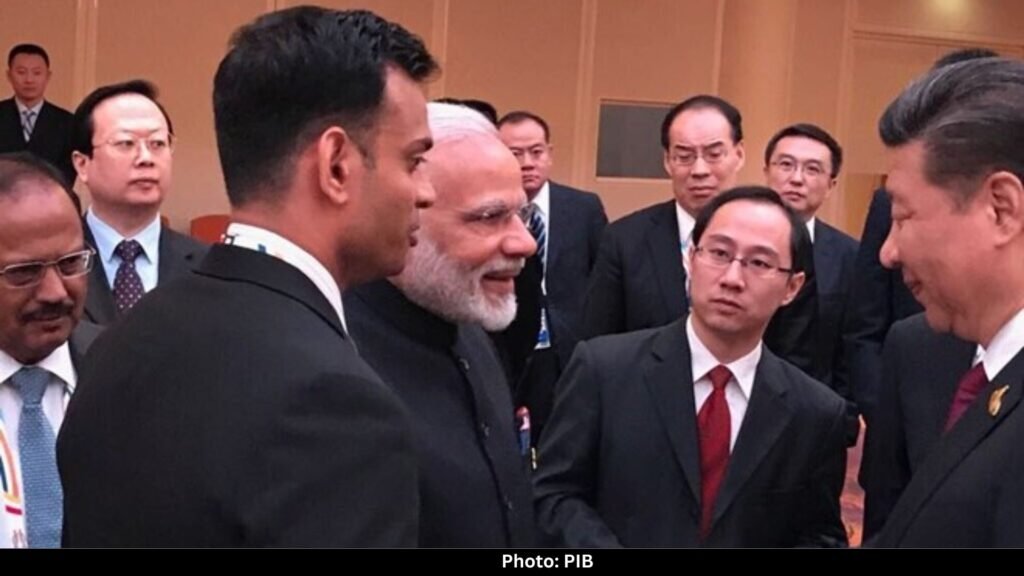A significant relaxation in the business visa policy of the Chinese executives is the move announced by the Indian government to bring in a new phase in the economic relationship between the two countries. This strategic move aims to facilitate the entry of top managers from large Chinese companies, such as Vivo and Xiaomi, at a time when both nations are struggling to form an economic partnership.
Although bilateral relations between India and China have not been smooth in recent years, especially after the Galwan Valley confrontation of 2020, this policy change would provide a practical solution to the expansion of Indian-Chinese trade and investment, a necessity for both economies.
A Pragmatic Policy for Economic Growth
The fact that India has decided to ease the visa issuance process for Chinese businesspeople is not only a bureaucratic improvement but also a strategic improvisation that addresses the major operational hitches within its manufacturing industry. China has always been a key partner in terms of technology, investment, as well as technical know-how.
Nonetheless, the free movement of Chinese technicians and workers, particularly those required for installation, maintenance, and training, was hindered by cumbersome visa procedures, in contrast to the Indian high-profile Production Linked Incentive (PLI).
India is on the path of establishing a healthier and more efficient business environment, which is increasingly becoming more streamlined with a new personalized e-business visa that caters to the needs of choke-point sectors, including telecommunications, chemicals, and renewables, now being introduced, and a faster-tracked visa processing portal. The novel visa regime also promises easier and more transparent application procedures, which would streamline the process of making decisions concerning the market in India by the Chinese executives.
In the case of Indian manufacturers, this means a practical advantage-a way to access the know-how required to keep production lines smooth and allow them to meet the rising demands of a competitive global market.
The Importance of People-to-People Ties
Among the most significant impacts of this visa policy change is that it could create stronger people-to-people relations between the Indian and Chinese enterprises. In the past, despite the good ties between the two countries in terms of trade, bureaucratic issues usually hindered the full potential of this relationship from being actualized effectively. Access to Chinese executives becomes easier, and the occasions to establish partnerships, joint ventures, and technology-sharing arrangements are thus amplified.
The rapid processing of business visas for top Chinese managers would be an indication that both governments are prioritizing economic engagement over political differences. This type of people-to-people cooperation is a key element in bridging the gaps between two nations and creating lasting partnerships through mutual gains.
Moreover, these reforms not only promote trade but also convey a strong message to the global business community, indicating India’s determination to remain a leader in international manufacturing and technology. India can become an even more competitive investment destination for Chinese firms seeking to diversify their supply chains in response to the changing global situation, as reflected by the new visa policies.
A Boost for India’s Investment Climate
The economic performance of India is closely tied to the inflow of foreign investment, particularly in sectors where India aims to lead globally, such as electronics, renewable energy, and advanced manufacturing. India is making it clear that it is open to business not only with Western firms, but also with its Asian neighbors, by simplifying the process of issuing visas, especially to Chinese executives.
Introduction of a business visa e-system in key sectors is a game-changer. It will enable Chinese business executives to apply for multiple-entry visas with shorter processing times, providing them with the necessary flexibility in the fast-paced world of business and investment. Due to this increased accessibility, India is already becoming a world center or hub in terms of innovation, manufacturing, and business development.
The Diplomatic Context
The softening of visa rules takes place against the backdrop of further improvement in Indian-Chinese relations. This year has seen significant developments in bilateral ties, including agreements on managing cross-border areas, the suspension of export restrictions, and the reinstatement of direct flights and cross-border trade. However, economic collaboration will also lie at the heart of the future India-China relationship, as these agreements were significant steps towards restoring trust between the two countries.
India is taking a forward-looking approach by examining the practical needs of business professionals. This is not about keeping the sins of the two countries on the political front, but about coming to an area of mutual interest where together they can excel in cooperation. The economic interaction is the basis on which the two nations should build a stronger relationship in the future.
The Road Ahead
The move to relax visa requirements for Chinese executives goes beyond a mere diplomatic move to facilitate business; it is a step in opening the India-China economic relations to their full potential. Through such a policy change, India is sending a signal to the world that it is about time it takes a center-state role in the world economy, not just as an importer of Chinese goods, but as an aid to innovation and industrialization.
With both nations striving to ensure a strong economic relationship, such a policy change will open the way to more active trade, increased investments, and a more integrated business environment. China-India cooperation in the next few years has the potential to become a precedent of how two neighbors with a complicated history can work and collaborate in a productive and similarly beneficial manner. The path forward is one replete with possibilities, both in the case of India and China, to be able to create a future where prosperity is shared.
Read More: From Lincoln to Charlie Kirk: Why assassinations keep haunting America




